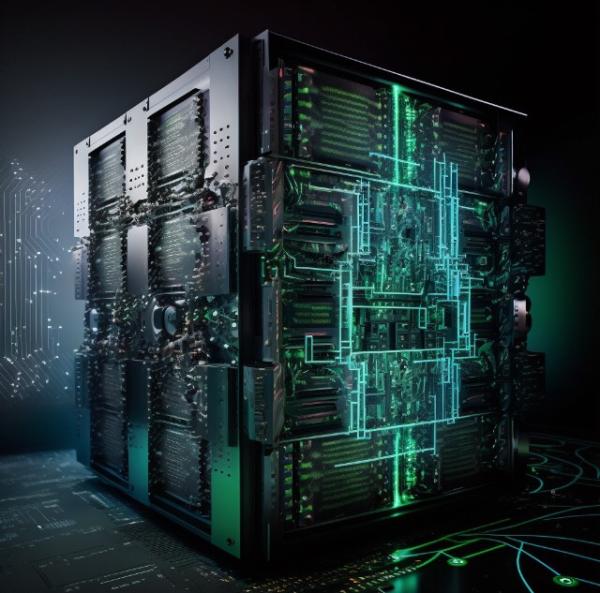BY LETTER
Computation
 Image from Keith Wigdor and Midjourney AI |
The actual process of computing can be defined in terms of a very small number of very simple operations, such as addition, multiplication, recursion, and so on. Computing devices can also make statements about other computing devices.
Key elements of computation include:
Input: The data or information provided to a system for processing. Inputs are transformed through computation to produce outputs.
Algorithm: A step-by-step set of rules or instructions that defines how a specific task or problem should be solved. Algorithms are fundamental to computation and can be implemented in various forms, from mathematical formulas to computer programs.
Processing: The manipulation and transformation of input data according to the rules specified by the algorithm. This step involves performing calculations, logical operations, and other manipulations to derive meaningful results.
Output: The result or output produced by the computation, which provides a solution to the problem or answers the question posed by the input.
Types of computation
The term that encompasses any material that performs computation is computronium.Cognitive computation: Intelligent agents naturally perform computations in their minds, solving problems and making decisions based on cognitive processes.
Digital computation: Electronic computers and digital systems have become the primary tools for carrying out complex computations. These systems use binary representation and execute algorithms through different hardware, like electronic circuits.
Mechanical computation: Mechanical devices such as abacuses and slide rules are also used for computation.
Quantum computation: A type that uses the principles of quantum mechanics to perform computation using quantum bits (qubits) and quantum gates.
BioGeoComputing: A layer of crustal bacteria in several planets which has been converted into processing substrate.
DNA Computing: In DNA computing, information is encoded using the four nucleotide bases (adenine, thymine, cytosine, and guanine). DNA strands are manipulated and processed in a way that represents the solution to a computational problem.
Geoflex Computing: A type of computing using the energy of tidal flexing in ice moons.
Ubiquitous Computing: Computing that is an integral, invisible part of people's lives. With ubiquitous computing, computers take into account the human world rather than requiring humans to enter into the computer's methods of working.
Related Articles
- BioGeoComputing
- Compuform - Text by M. Alan Kazlev after Charlie Stross, in Anders Sandberg's Transhuman Terminology
To turn matter into computronium. An old blue chip industry that has never gone out of demand. - Computer
- Computer Engineering
- Computer Science - Text by Adapted by M. Alan Kazlev from the original write-up by Robert J. Hall
The theoretical and practical application of computational devices, including hardware, firmware and software architecture, programming skills, simulation techniques, customized algorithms and dedicated aioids, virtualics, networking, parallel programming, intelligent subroutines, information storage, comparative machine-level low level, and intermediate level operating systems, and subturing artificial intelligences. - Computronium
- Computronium Bell-curve Theory
- Computronium Node
- DNA Computing - Text by M. Alan Kazlev
A form of computing dating back to the Information Age, in which DNA molecules are used to solve complex mathematical problems or generate virtual worlds. DNA computers allow trillions of computations to be performed simultaneously. However, they are slower than standard nanocomputers. - Freedom of Computing
- Geoflex Computing
- RAM (computing) - Text by M. Alan Kazlev
The working memory of a computer, into which applications and programs can be loaded and run. Memory locations can be accessed in any order and do not need to be accessed sequentially (originally an acronym in old Anglic: Random Access Memory). - Ubiquitous Computing - Text by Anders Sandberg in his Transhuman Terminology
Also known as "embodied virtuality". Information and early Interplanetary Age Old Earth. Computers that are an integral, invisible part of people's lives. In some ways the opposite of virtual reality, in which the user is absorbed into the computational world. With ubiquitous computing, computers take into account the human world rather than requiring humans to enter into the computer's methods of working. Ubiquitous computing evolved into the micro-, meso- and micro/meso/nanon based interactivity of the middle Interplanetary Age and later.
Appears in Topics
Development Notes
Text by M. Alan Kazlev
Initially published on 24 September 2001.
expanded from a stub article by avengium 12/15/23
Initially published on 24 September 2001.
expanded from a stub article by avengium 12/15/23






